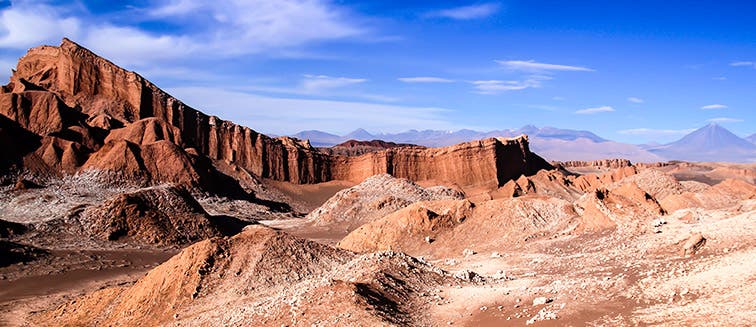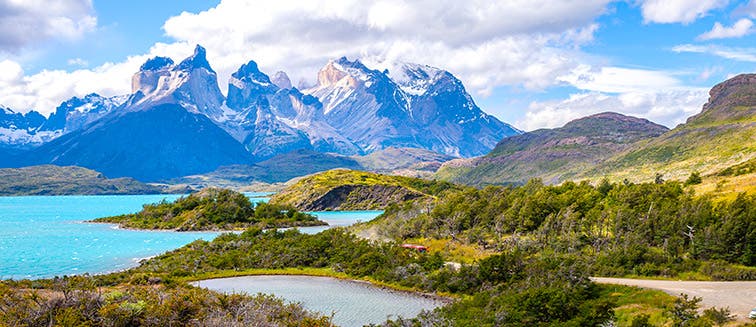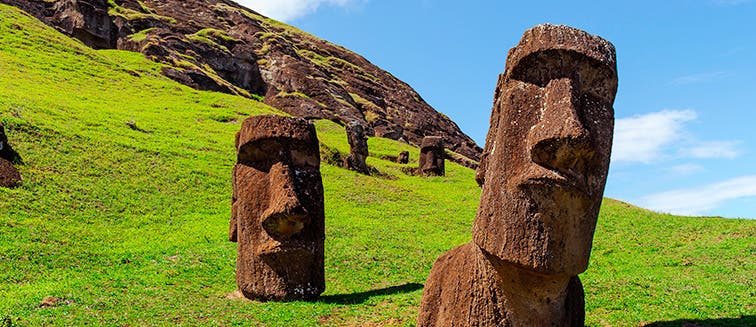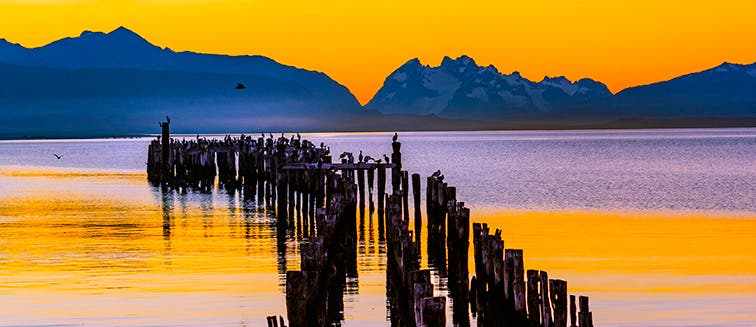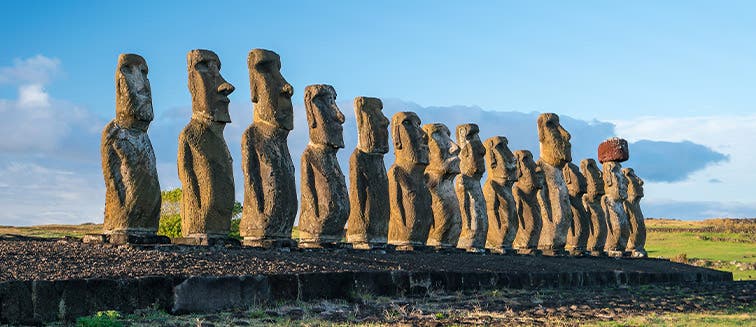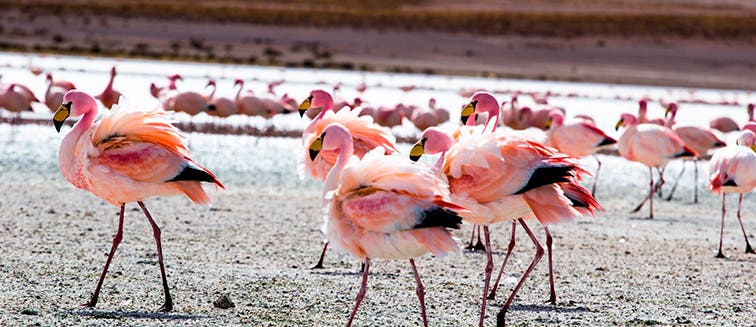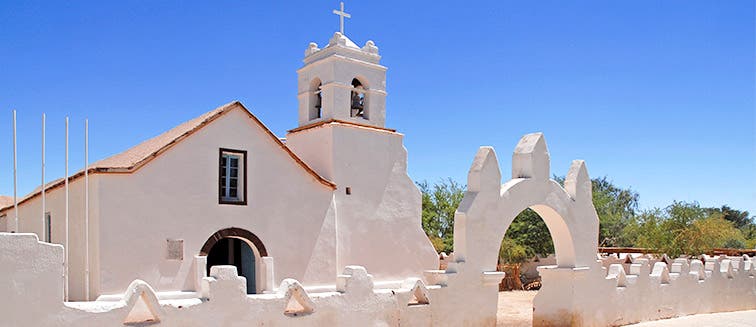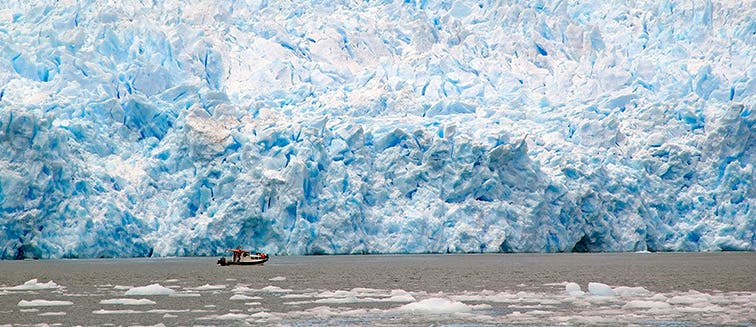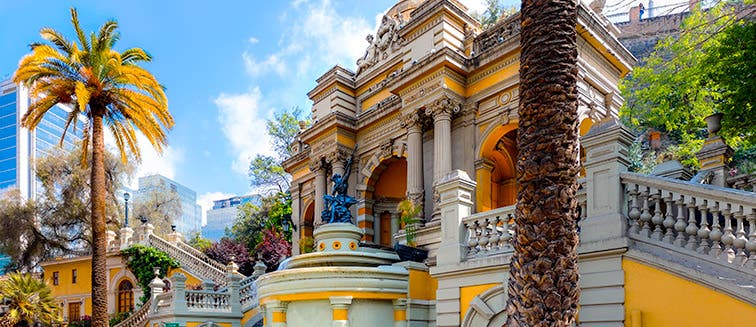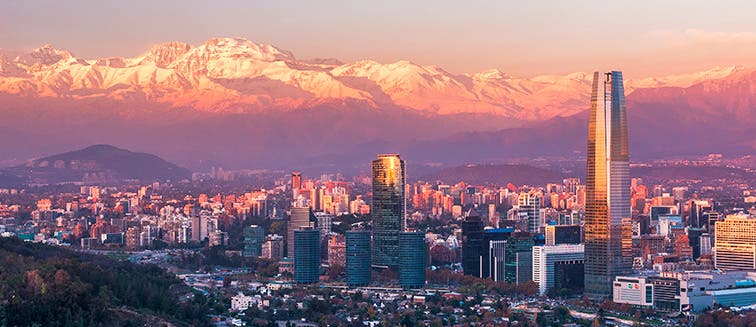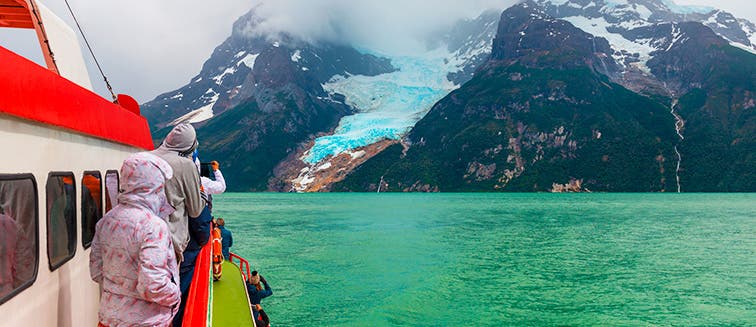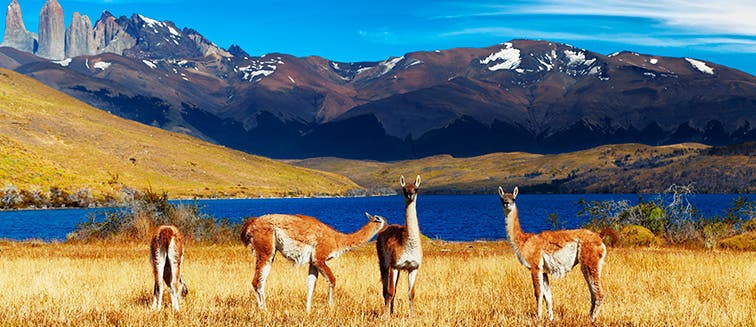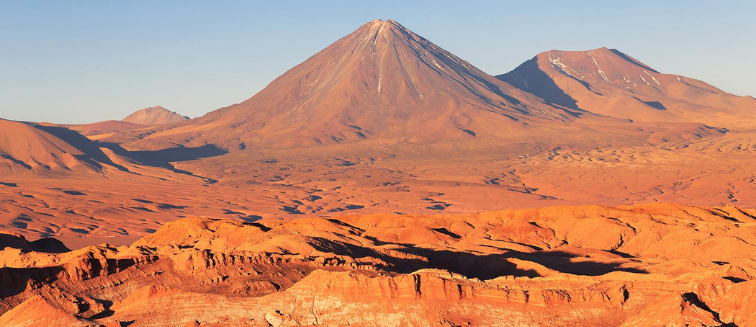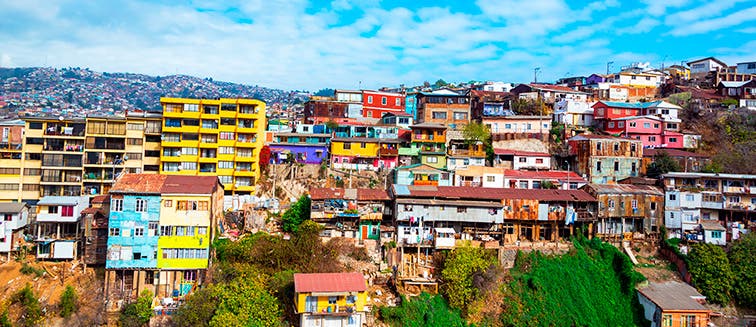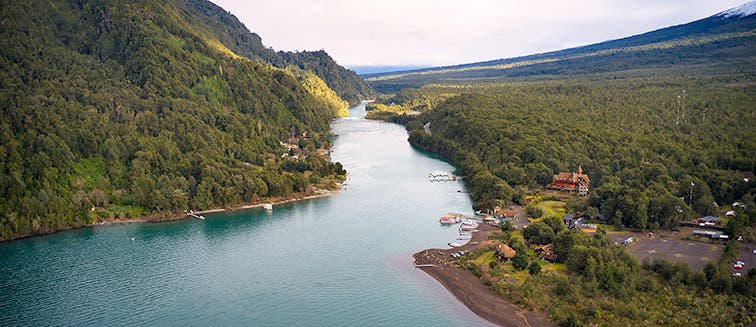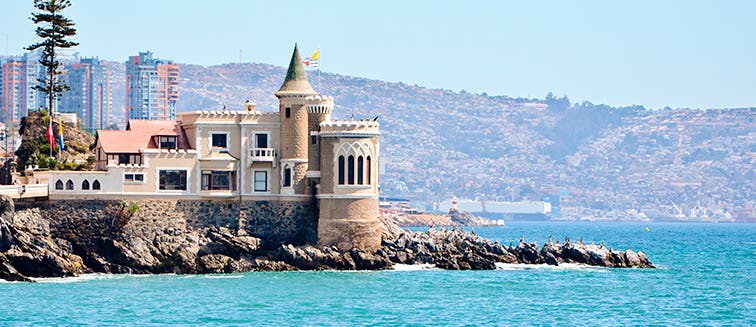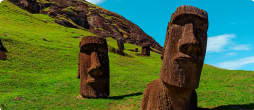Sandwiched between the Andes and the Pacific Ocean, Chile is a dream travel destination in South America. Bordered by Peru, Argentina and Bolivia, a trip to Chile is a journey through colossal natural beauty, brilliant wines and a friendly, welcoming national culture.
Travel to Chile has long been a favourite of backpackers, but a vacation to Chile has wide appeal, with destinations as diverse as the Atacama Desert and the glaciers of Patagonia. Soak up the innovative atmosphere of the capital, Santiago, cross the ocean to see the mysterious Moai statues of Easter Island and sip Chilean wines in the Maipo Valley. Stretching from the volcanic highlands in the north to the ice fields of Antarctica in the south, Chile is both the longest and one of the thinnest countries in the world, at only 150 miles across at its widest point.
This unique geography means you can experience a diverse array of environments, landscapes and culture if you travel to Chile. The most popular places to visit on a tour of Chile include Santiago, Torres del Paine National Park in Patagonia, the coastal paradise of Valparaiso, the geysers of San Pedro de Atacama, Easter Island and the charming Chiloe archipelago.
Considered one of the safest and most developed countries in Latin America, a package trip to Chile is the perfect choice for both first time travellers to South America and intrepid nature lovers.
History of Chile
Chile has a rich and long historical heritage. If you travel to Chile, you can visit the fascinating Milodon Cave Natural Monument, near Puerto Natales, to discover the remains of extinct animals and human ancestors dating back to 6000 BC! The neighbouring Inca Empire briefly extended into northern Chile during the 15th-century, but the indigenous Mapuche people successfully resisted Inca rule.
The first European, Ferdinand Magellan, arrived in Chile in 1520, followed shortly after by Spanish Conquistadors in 1540. The capital of Santiago was established the following year and if you travel to Chile today you can visit Santiago’s Plaza de Armas and La Moneda Palace to experience the Spanish influence of Chile’s colonial era. Despite this, the Conquistadors were unable to conquer the indigenous Mapuche community of south-central Chile, and the country gained independence in 1818.
In the 19th-century, Chile experienced a number of conflicts with Peru and Bolivia, culminating in the War of the Pacific, in which Chile claimed its northern territory from Bolivia. The 20th-century was characterized by political divisions, resulting in a Coup d’Etat in 1973. A right-wing military dictatorship was established under Augusto Pinochet which endured up until 1990.
Nowadays, Chile is one of the most economically and politically stable nations in South America, known for its high quality of life, cosmopolitan cities and immaculate natural landscapes.
Nature in Chile
A trip to Chile is all about getting outdoors and discovering this land of extremes. A paradise for nature lovers, Chile stretches for more than 4,300 kilometres from north to south. From the arid plains of the Atacama Desert, the Chilean landscapes unfold through volcanic highlands, lush valleys and ancient forests before culminating in the glaciers, fjords and ice fields of Southern Patagonia.
Due to the geographical isolation between the Atacama Desert and the Andes mountains, Chile has a rich biodiversity, whilst the length of the country ensures a mix of climate zones and environments to discover.
With 31 national parks and 48 national reserves, Chile is one of the worlds top nature travel destinations. If you visit Chile there are a number of natural wonders that you cannot miss. The Valley of the Moon, in the Atacama Desert, the driest non-polar desert on earth, is one of these.
A lunar landscape of red and orange rocks, this is the place to go to witness an unforgettable sunset. Nearby, the Tatio Geyser Field is another spectacular natural wonder, situated 4,320 metres above sea level in the Andes. Home to around 80 active geysers, a trip to Tatio reveals the amazing volcanic activity that has gifted Chile its unique landscapes.
You cannot travel to Chile without visiting Torres del Paine National Park, the most popular place to visit in Chile. Nestled in the heart of Patagonia, the soaring granite peaks, lakes, ancient glaciers and unique plant and wildlife of Torres del Paine have secured this parks place on the bucket lists of all intrepid travellers.
Culture in Chile
Since the colonial era, Chilean culture has been a fusion of Mapuche traditions and Spanish influences. If you visit Puerto Mott or Puerto Varas on a tour of Chile, you’ll also notice a strong German influence, the result of European migration during the late 19th-century. Chile is a Spanish-speaking country, although indigenous languages such as Mapudungun, Quechua, Aymara, and Rapa Nui are also widely spoken.
Chilean culture has a rich musical heritage and every year a series of excellent music festivals are held in Vina del Mar. Famously, Chile is known as the ‘Land of Poets’, and the national culture highly values its wordsmiths. In fact, Chilean writers, Pablo Nevada and Gabriela Mistral both received the Noble Prize in Literature for their poetry.
If you want to experience authentic folklore traditions during a trip to Chile, you’ll find that the cultural influences vary throughout the country, making getting to know the local customs a fascinating pursuit. Of course, you cannot speak about Chilean culture without mentioning football. Chileans love football and it’s a big part of the national culture. Furthermore, Chile has competed in nine FIFA World Cup finals so far.







